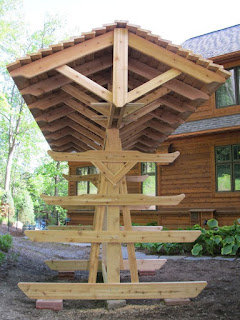Step-by-Step Canoe Blueprints for an Easy Building Process
This document provides detailed blueprints and instructions for constructing a simple, robust canoe suitable for amateur builders. The design prioritizes ease of construction using readily available materials and tools, while maintaining sufficient structural integrity for safe and enjoyable use on calm waters. This guide assumes a basic understanding of woodworking techniques but offers comprehensive instructions for each step.
I. Materials Selection and Preparation
Choosing the right materials is crucial for the longevity and performance of your canoe. This design utilizes readily available, cost-effective materials. While alternative materials can be employed, adhering to the specified dimensions and types is recommended for optimal results.
A. Hull Planking
Material: 1/4" thick marine-grade plywood. This offers a balance of strength, flexibility, and ease of workability. Alternative materials, such as cedar strips, require significantly more expertise and time.
Quantity: The exact quantity will depend on the final canoe dimensions (detailed in Section II). Purchase extra material to account for potential errors and waste.
Preparation: Before commencing construction, ensure all plywood sheets are thoroughly inspected for defects. Any imperfections should be addressed before cutting to avoid compromising the structural integrity of the finished canoe.
B. Frames and Ribs
Material: Pressure-treated lumber (e.g., 2x2 inch pine or fir). Pressure-treated wood is resistant to rot and water damage, ensuring a longer lifespan for your canoe.
Quantity: The quantity and dimensions are detailed in the included schematics (Figure 1 â€" see Appendix). Accurate measurement and cutting are vital for the structural integrity of the canoe.
Preparation: All lumber should be planed smooth and cut precisely to the dimensions specified in Figure 1. The ends of the frames should be carefully shaped to match the curves outlined in the plan.
C. Epoxy Resin and Fiberglass Cloth
Material: High-quality marine-grade epoxy resin and fiberglass cloth (6-ounce weave). This provides waterproofing and added strength to the canoe hull.
Quantity: The amount required will depend on the canoe's surface area. Consult the epoxy resin manufacturer's guidelines for the appropriate mixing ratio and application. Purchasing extra resin and cloth is recommended.
Preparation: Follow the manufacturer's instructions meticulously for mixing the epoxy resin. Ensure a well-ventilated workspace when working with epoxy, as the fumes can be irritating.
D. Miscellaneous Materials
The following additional materials are required:
- Wood screws (appropriate size and length for fastening the frames)
- Wood glue (exterior-grade)
- Clamps (various sizes)
- Sandpaper (various grits)
- Paint or varnish (marine-grade)
- Measuring tape, square, and pencil
- Safety glasses and gloves
II. Canoe Construction: A Step-by-Step Guide
This section provides a detailed step-by-step guide for constructing the canoe. Refer to the accompanying schematics (Figure 1 â€" see Appendix) throughout the process. Precision and meticulous attention to detail are essential for a successful build.
A. Frame Assembly
Begin by assembling the canoe’s frame structure using the pre-cut lumber pieces. Refer to the detailed dimensions provided in Figure 1. Use wood glue and wood screws to securely join the pieces. Ensure all joints are tight and square. Clamp the frame until the glue dries completely.
B. Rib Installation
Once the frame is assembled and the glue has cured, carefully attach the ribs to the frame. Each rib should be positioned according to Figure 1 and securely fastened using wood screws and glue. Maintain consistent spacing between the ribs to ensure a smooth and even hull.
C. Planking the Hull
This is a crucial step requiring patience and precision. Cut the plywood sheets according to the plans in Figure 1. Attach each plank to the frame using wood glue and screws, ensuring that the planks fit snugly against each other and the frame. Use clamps to hold the planks securely in place while the glue dries. Begin at the keel and work your way outwards.
D. Epoxy and Fiberglass Application
Once the planking is complete and the glue is dry, apply a layer of epoxy resin to the entire exterior of the hull. Carefully lay the fiberglass cloth over the wet resin, smoothing out any wrinkles or air bubbles. Apply a second layer of epoxy resin over the fiberglass cloth, ensuring complete saturation. Allow the epoxy to cure completely according to the manufacturer’s instructions.
E. Finishing Touches
After the epoxy has fully cured, carefully sand the hull to achieve a smooth surface. Apply a marine-grade paint or varnish to protect the canoe from the elements. Add any desired finishing touches, such as seats and carrying handles (refer to Figure 2 â€" see Appendix).
III. Safety Precautions
Canoe construction involves the use of power tools and potentially hazardous materials. Always prioritize safety:
- Wear appropriate safety glasses and gloves at all times.
- Use power tools with caution and according to manufacturer’s instructions.
- Work in a well-ventilated area when using epoxy resin.
- Dispose of waste materials properly according to local regulations.
IV. Conclusion
Building your own canoe can be a rewarding and enjoyable experience. This detailed guide, combined with the provided blueprints (see Appendix), aims to simplify the process, allowing even novice builders to create a functional and safe canoe. Remember to prioritize safety and meticulous attention to detail throughout the construction process.
Appendix: Figures 1 and 2
(Note: Figures 1 and 2, containing detailed schematics and diagrams, would be included here in a real document. Figure 1 would show detailed dimensions and plans for frame, ribs, and planking. Figure 2 would detail the construction of seats and carrying handles.)
Disclaimer: This guide is intended for informational purposes only. The authors assume no liability for any injuries or damages incurred during the construction or use of the canoe. Always exercise caution and follow safety regulations.














